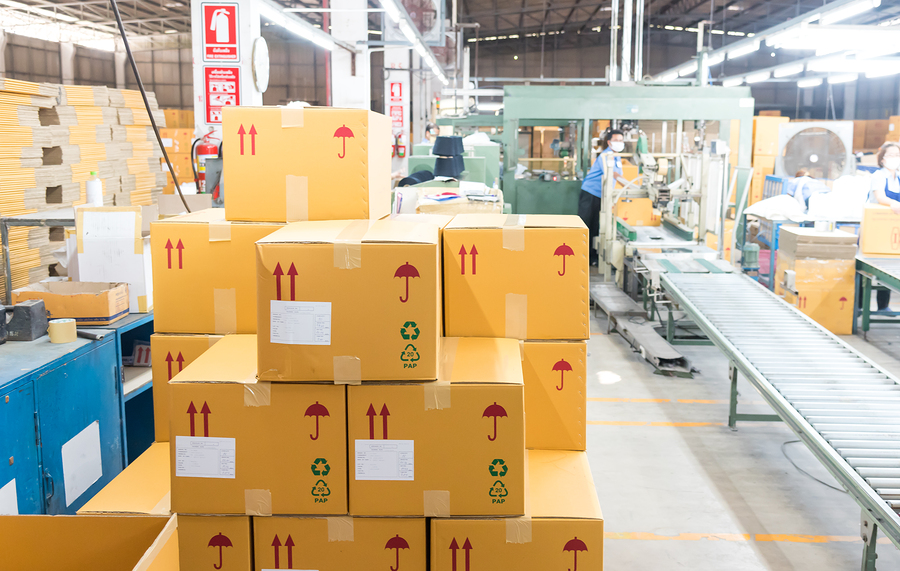Updated June, 2023
Over the past few years, convenience has reigned supreme for customers, as indicated by the explosive growth of ecommerce, which is expected to account for $1.1 trillion in US sales by the end of 2023. Customers have grown accustomed to instant gratification and now want near-instant deliveries from retailers. In fact, 70% would pay extra for options like one-hour or same-day delivery and an estimated 22% of customers drop out of an online shopping session because shipping is too slow.
This need for speed puts retailers under a lot of pressure. Once a customer places an order, it’s a race against the clock to process the transaction, check the inventory, pack the box, ship off the order, and hopefully, the items get to the customer on time.
The problem is that several things can go wrong along the way. Let’s examine the most common reasons for delays in delivery of goods.
1. Inaccurate inventory
In a recent survey, 87% of retail professionals said that inaccurate inventories account for more revenue loss than theft. And with retailers selling across multiple platforms and managing overwhelming order volumes, unreliable inventory systems can cause problems like overselling.
Customers choose to order online because it’s easy and convenient. But that convenience evaporates if they place an order, pay for it, and find out later that an item is out of stock, discontinued, or not deliverable to their area. This is the kind of information shoppers need to know before they add items to their virtual carts. If retailers deliver bad news after the fact, retail employees have to issue refunds and deal with unhappy customers. This not only damages the retailer’s reputation, it can prevent customers from coming back.
2. Packaging and order fulfillment errors
When retailers are balancing a large volume of orders, mistakes are bound to happen. And some of these errors prevent customers from getting what they ordered in the condition they ordered it in:
- The wrong item or quantity of items in the package
- The package is missing an item or items
- Improper or insufficient packaging causes product damage
- An already damaged product is mistakenly shipped
Transportation troubles commonly cause delays in delivery of goods
Once a package is on the road to its destination, it becomes vulnerable to even more unfortunate events. Some of these are completely avoidable, while others are unfortunately outside of any person’s control.
3. Tracking glitches or missed scans
We’ve come a long way in package tracking, but it’s not quite perfect. If the delivery company fails to properly enter packages into their system, it could lead the customer to believe there’s a delivery delay. When in reality, the package is already sitting on their front porch.
There may also be instances when tracking information shows an item as “delivered,” yet it’s still in a warehouse or on a truck somewhere. Perhaps the customer received tracking information for the wrong order. All these instances can be particularly stressful for customers who plan their schedules around their deliveries.
4. Wrong address
If an address verification is incorrect or a courier misreads a label, a package could end up at the wrong house. In the best-case scenario, the items end up with a kind neighbor who will redirect it. But couriers may also return packages with address errors without attempting delivery at all.
These types of scenarios tend to be the most frustrating for customers. If a company sees within their own system that a package was delivered, they may feel that the customer is lying about the failure to deliver and refuse to rectify the situation. Meanwhile, from the customer’s perspective, they did not receive their bought-and-paid-for goods and may have to spend twice as much money reordering the same product; and chances are they’ll do it from a different store.
5. Unforeseen route obstacles
Delivery drivers often experience delays due to circumstances such as slow traffic, road closures, or difficult drop-offs.
6. Loss and damage
Even with excellent packaging, there’s always the risk of item loss or damage while in transit. Traffic accidents, driver errors, and other unexpected circumstances can prevent packages from arriving safely. The risk increases with oversized items. In fact, 21% of surveyed customers reported damage among larger items last year. What’s more, 15% said their bulky package never arrived.
7. Porch theft
Even if a package does survive the journey to its recipient’s doorstep, it’s not in the clear yet. Unless a courier hands a parcel directly to a recipient or drops it in a secure location, the items could be a target for theft. The problem is more common than you might think — nearly 25% of Americans have fallen victim to package theft, and half know someone who has. And, of course, package theft leads to a loss for the retailer in the form of shipping costs, refunds, or replacements.
Tips on How to Minimize Delays in Delivery of Goods
Neither customers nor businesses want to deal with the headaches associated with delivery delays and failures. While some of the common causes of delays are outside of anyone’s control, many of them actually are preventable with these tips:
Pivot to a BOPIS model
BOPIS (or buy online, pick up in-store) has become the gold standard order fulfillment solution for retailers of all types and sizes. A recent survey found that 68% of shoppers made multiple click-and-collect purchases, and 50% chose to purchase from online retailers based on in-store pick-up availability. BOPIS options are a great way to ensure customers receive their orders in excellent condition, without the risks and hassles of shipping, despite being slightly less convenient than home delivery.
Automate redundant processes
The age of automation has reduced room for human errors. Companies such as Smiota ensure that customers can take advantage of robust automated systems that support a number of business workflows and hundreds of technology integrations. This allows businesses to utilize user data syncing, integration into their own proprietary software system, and more.
Smiota’s Smart Lockers are perfect for retailers of all sizes
Smiota’s lockers are designed with safety, security, and convenience in mind in order to optimize mailrooms of all types and sizes. Whether for outdoors, indoors, or temperature-controlled environments, our lockers are perfect for any retail store in their efforts to make shipping and BOPIS a breeze.
To find out more about our holistic package shipping and receiving systems, get in touch today!



